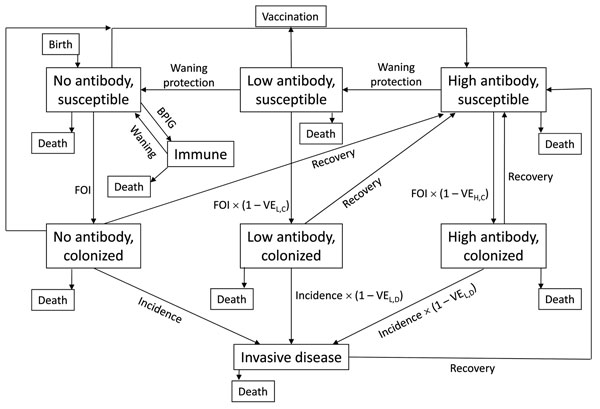Volume 18, Number 1—January 2012
Research
Modeling Insights into Haemophilus influenzae Type b Disease, Transmission, and Vaccine Programs
Figure 1

Figure 1. Structure of Haemophilus influenzae type b (Hib) simulation model. Persons are born into the no-antibody, disease-susceptible state and can die in any of the model states. Hib-susceptible persons become colonized based on the force of infection (FOI), which is reduced by protection from low (VEL,C) or high (VEH,C) antibody levels. Persons colonized with Hib develop invasive disease, which is reduced by protection from low (VEL,D) or high (VEH,D) antibody levels. Colonized and diseased persons recover to the high-antibody, disease-susceptible state. As immunity wanes, susceptible persons move from high to low antibody and from low to no antibody. Some persons are vaccinated and move from no or low antibody states to the high antibody state. For the Alaska Native population, use of bacterial polysaccharide immunoglobulin (BPIG) starting at birth temporarily moves persons to an immune state; as BPIG wanes, immune persons return to the susceptible state. See Technical Appendix 1 for a formal description of the model structure.
1Current affiliation: Group Health Research Institute, Seattle, Washington, USA.